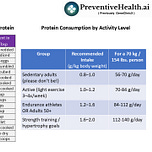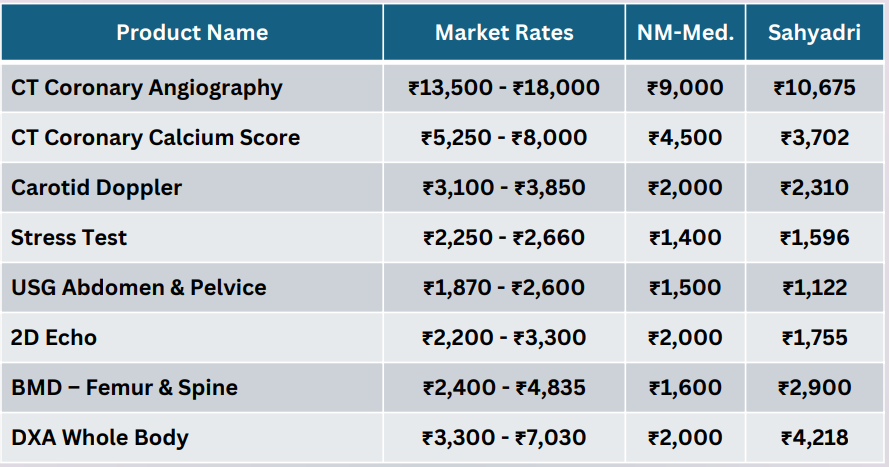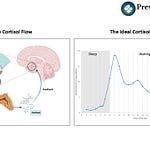If there’s one macronutrient that deserves more attention as we age, train, or aim for better metabolic health — it’s protein. It is also one of the most discussed macronutrient on social media, with more divergent views and misinformation around it than almost any other topics. In today’s blog post #50, I cover the basics of protein, why protein matters, show you how much you need based on your activity level, highlight top sources of protein, and share my own regimen and recipes for hitting my protein goals every day. My hope is that by the end of this post, you are feeling a lot more knowledgeable about the role and importance of protein, and more importantly, feel like you have something actionable to work on.
Basics of Protein
Proteins are built from 20 amino acids — and 9 are “essential”, meaning your body can’t make them. This means you need to get those amino acids from your food. Complete proteins (like meat, fish, eggs, dairy, soy, and quinoa) give you all nine in one shot. Incomplete protein sources (grains, beans, nuts) can still be paired together — like rice with lentils or corn with beans — to make a complete amino acid profile. When people use the term “high-quality protein,” they generally mean protein that contains all nine essential amino acids in the right amounts for your body to use. High-quality protein is also highly digestible and bioavailable, which means it’s easy for your body to absorb and put to work.
Why Protein Matters
Protein is truly unique. Every cell in your body contains protein. It is vital for muscle repair after workouts, making enzymes that help us digest food, supporting our immune system, and creating the structure of bones, hair, and skin. High-quality protein also plays a key role in triggering muscle protein synthesis, which is important for preserving muscle mass as we age, supporting recovery after exercise, and maintaining overall strength.
As we age, muscle mass naturally declines by as much as 3–8% per decade after 30. That rate accelerates after 60 and is strongly linked with frailty and falls. Holding on to that muscle is key to preserving bone health, blood sugar control, and even living longer — one study showed older adults with more muscle had a 20% lower risk of dying the following year, compared to those with less muscle.
Some Interesting Fun Facts About Protein (that made me take it a lot more seriously):
Protein is never “stored” the way carbs or fat are. Instead, it’s constantly broken down and rebuilt. This means you absolutely need a steady daily intake, and can’t count on it being available from the previous day’s consumption, unlike fat and carbs.
Unlike carbs and fat, it contains a critical element: nitrogen — that supports building tissues, enzymes, and immune defenses. So if you don’t consume enough of it each day, you are putting your critical functions in jeopardy.
Protein is more satiating. It makes you feel full for longer, unlike carbs, especially simple carbs, which often cause hunger pangs within a couple of hours post-consumption.
Protein burns more calories during digestion. ~20-30% of calories from proteins are used to digest it compared to only ~5-10% for carbs or ~0.3% for fat. In other words, if you had 100 calories worth of protein, you would burn about 20 to 30 of those calories in the process of digesting that protein, thereby only consuming a net of 70 to 80 calories. That’s why a high-protein meal can help with hunger control and fat loss too.
How Much Protein Do You Need?
Daily protein intake has become a highly contentious topic with widely varying numbers and philosophies depending on whom you choose to believe.
Protein Intake Recommendations:
How can various supposedly credible entities and individuals have a recommendation ranging from 56 grams to 154 grams of protein?!!
The answer lies partially in the fact that the WHO is recommending this as a Recommended Daily Allowance (RDA) to prevent protein deficiency, not an optimal target for muscle maintenance or metabolic health. The longevity and healthspan experts tend to be more focused on healthspan optimization; however, they often assume that practical considerations are not a problem (maybe a good assumption for the rich biohackers but not for the common man). Here is how I have reconciled all the different recommendations into a framework that I follow for myself and suggest to my family members. Determine your protein target by your activity level, age, and goals. General guidelines are:
That means someone like me who is 50+, weighs about 70 kg, does strength training 3X a week, plays 180 minutes of soccer 2X a week, does Peloton 2X a week, and walks about 18K to 20K steps a day, needs about 1.6 grams per kg of body weight level — so roughly 112 g per day. That’s a lot of protein!!! One key point to note here is that the weight you enter should be your desired weight rather than your current weight, when trying to calculate your protein needs.
Baselining Your Current Protein Consumption
The first step I recommend is to baseline what your typical daily protein intake is by tracking your consumption for a week. I know this is a bit painful but since it is only for a week, and will provide worthwhile insight, let’s push through it. There are a few different tools you can use to track your protein consumption: MyFitnessPal, or our own GeneClinicX app (available on the App Store and Google Play), or our WhatsApp based Kai tool (use free7 as the code if prompted so you don’t have to pay for it). In my case, my baseline when I did it 5 years back was at about 60 grams of daily protein consumption. I had to get from 60 grams to 112 grams; an almost 2X jump … intimidating for sure, but now I had clarity on my goal. Once you know your baseline, and how far off your consumption is relative to your need, we can then focus on the different protein sources.
What Are the Best Protein Sources?
Now, I had to determine how I could bridge that gap. The first step was to figure out all the different sources of protein that I was willing to consume. I am primarily a vegetarian but I am willing to eat eggs and chicken (and rarely turkey). I do not consume any other form of meat. For those of you that eat red meat regularly, you probably will achieve your daily protein intake reasonably easily (although I would recommend you look at your fiber intake closely, but that is a topic for a different day). For vegetarians, it is definitely harder but doable. The table below shows you how much of each type of food you need to consume, to get 20 grams of protein. As you can see, some of the foods require you to consume a large quantity of it just to get 20 grams of protein; not very practical. Having a chart like this will really help you identify what foods you want to consider adding into your daily routine.
Food Portions for 20g Protein Intake
My Personal Regimen
I did an audit of my various meals and decided to break up my target of 112 grams of protein between 3 meals: breakfast, snack and dinner. I skip lunch because my late breakfast and early dinner (for a 14 - 15 hour intermittent fasting window) means I don’t have an appetite for lunch, but I can squeeze in a workout related snack. Here’s what my typical day looks like to hit my protein target:
✅ Breakfast Options around 10:30 am: Target 30 - 40 grams of protein
2-egg omelet with cheese and spinach (~15 g protein)
Chicken Enchilada with veggies (~20 g protein)
Greek yogurt with mixed berries (~20 g protein)
Mixed nuts (~6 g protein)
In addition to having some variation of two of the above options, the rest of my breakfast items (like chaas, salad with avocados, etc.) add another 5 to 7 grams of protein. Starting off the day with close to 40 grams of protein gives me the feeling of satiety and helps me avoid the temptation of carb and sugar heavy snacks.
❌ Lunch: I usually skip lunch because of the late breakfast.
✅ Pre- and Post-Workout Snack Options between 3 and 4 pm: Target 30 to 40 grams of protein
By 3 pm, it is work out time, by when I am getting hungry again. This is when I go for a protein shake (~30 g protein). I make this interesting and practical by adding in tasty sources of carbs because the combination of protein and carbs are important from a post workout routine point of view. I create a combination of
whey isolate (30 g of protein)
creatine monohydrate (5 to 8 g)
chia seeds (1 tablespoon)
walnuts (0.5 oz), almonds (0.5 oz)
blueberries, raspberries, blackberries (1 oz combined)
1 fig
mixed in with 1 glass of water.
I put the whole thing through the blender. This is about a 500 calorie glass of goodness, with about 38 grams of protein. As importantly, it is delicious without being sweet, making it a lot more palatable than having just the unflavored whey isolate. I have half of it 30 to 45 minutes before my workout and the other half within 15 minutes after the workout.
I don’t cook at all (I say this with my head hung low in shame), but the one thing I make (blending is the new cooking) is this protein shake, that I have kept fine-tuning over the years. My wife is going to be rolling her eyes when she reads how big a deal I have made about this one part of my day! As the author, I get to shape the narrative 🙂
✅ Dinner Options at 7 pm: Target 30 grams of protein
Chicken stir-fry with veggies (~28 g protein)
Penne Arrabbiata with chicken and veggies (~30 g protein)
Rice, daal, some vegetables, chapati (~12 g protein)
Burrito bowl with chicken, cheese, vegetables, lettuce, guacamole (~45 g protein)
Spinach Crepe w/ olives, roasted almonds, onions, feta cheese, cucumber yogurt sauce (~15 g protein)
I usually have one of the above options for dinner and I add in Greek Yogurt, regular dahi, and mixed nuts into my meals, to make up any protein shortage I have for the day.
Common Pitfalls To Avoid Around Protein Consumption
Overloading one meal — your body processes protein most efficiently up to ~40 g per meal. Avoid having more than that in a single meal.
Relying only on protein powders — whole foods give you fiber, vitamins, and minerals. Use protein powders only when you cannot achieve your daily targets through dietary means.
Not checking the nutrition label — always review the nutrition labels of protein powders and energy bars because many of them are sugar bombs that more than negate their positive effects.
Forgetting hydration — higher protein intake, as well as creatine, needs enough water to support kidney and digestive health.
Ramping too fast — As I went from 60 to 100 grams of daily protein intake, I went about it slowly but surely, while keeping an eye on my biomarkers to ensure I wasn’t placing too much of a burden on my kidneys, liver, and GI system. I tracked the following biomarkers: BUN, creatinine, uric acid, and urine calcium. Healthy adults can usually tolerate high protein well although it should still be ramped carefully — but people with kidney or liver issues need to monitor protein more carefully.
The Results Of My Increased Protein Consumption On My Health Markers
My average daily protein consumption has gone from 60 grams to between 97 and 100 grams of protein over the last 3 years. Not at the 112 gram number as yet, but close enough. More importantly, I have seen my skeletal muscle mass go up over the 66.6 lbs in December 2018 to 71.0 lbs by May 2022 when I was doing regular strength training but had not increased my protein consumption significantly. I am now at 73.4 lbs as of May 2025. While the first 4.4 lbs of muscle mass increase can be attributed to strength training primarily, the next 3 lbs of muscle mass in the last 3 years are because of the increased protein consumption. I have to also give a shout out to creatine. Creatine supports muscle strength and growth, while also boosting brain energy metabolism — aiding both physical performance and cognitive health. This increased muscle mass is especially satisfying because I know had I not done both, I would have been losing 3% to 8% of muscle mass per decade. The other visible impact, although not completely attributable to increased muscle mass, has been the impact on my HbA1c levels. My HbA1c went down from about 5.9% in 2017 to 5.8% in 2022 to 5.5% in 2025. The bottom line is that protein is a cornerstone of long-term health. Whether you’re strength training, looking to control appetite, or preserving muscle as you age, get your protein every day.
As always I welcome your thoughts and would love to have you share your experiences in the comments.
If you haven’t already, I hope you’ll join the waitlist for The Longevity Lab community today (it’s FREE), and invite your friends and family too. For The Longevity Lab community members in Mumbai and Pune, you now have access to discounts on various imaging tests, as per the table below. We take absolutely no commissions or cuts; we pass on all the savings to you.
To join the Longevity Lab community, scan the QR code below or click on the WhatsApp community link here.
Disclaimer: The information provided in this article is for educational and informational purposes only. It is not intended as a substitute for professional medical advice, diagnosis, or treatment. Always seek the advice of your physician or other qualified healthcare providers with any questions you may have regarding a medical condition or wellness program. Reliance on any information provided in this article is solely at your own risk. The author and publisher of this article make no representations or warranties, express or implied, regarding the completeness, accuracy, reliability, suitability, or effectiveness of the information contained herein. The inclusion of specific products, services, or strategies in this article does not imply endorsement or recommendation. The author and publisher disclaim any liability for any adverse effects or consequences resulting from the use or application of the information presented. You are encouraged to consult with a qualified healthcare professional before making any changes to your diet, exercise routine, or lifestyle.


















Share this post